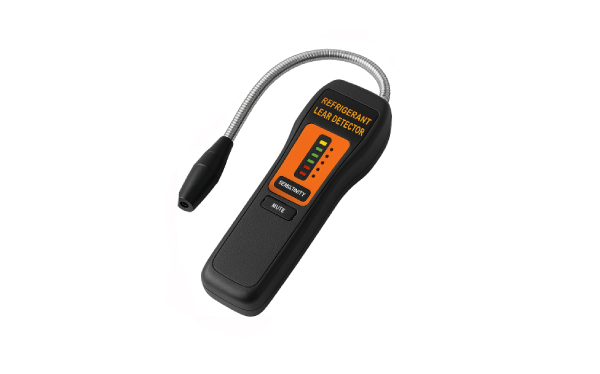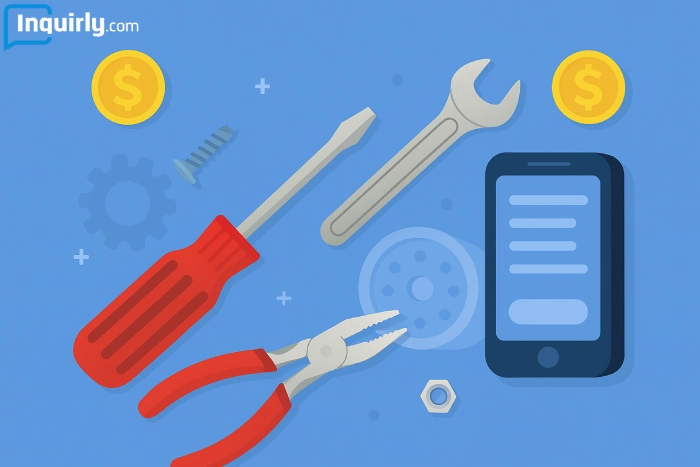In 2025 appliances are packed with smart technology, delicate electronics and high-efficiency systems that demand more from technicians than just basic skills. To keep up, appliance repair pros need specialized tools, sharper diagnostic methods, and a solid understanding of how different systems work together inside today’s machines.
If you’re planning to get into appliance service, level up your skills, or just make sure you’re ready for that next unexpected breakdown at home, it all starts with having the right tools. Knowing how to find quality appliance parts online, building a maintenance tool list that actually covers real-world repairs and understanding the basics of testing and diagnosing appliances – these are the essentials that make repairs faster, safer and more reliable.
This guide gets straight to the point. You’ll get a clear look at the most important appliance repair tools, smart diagnostic gear worth investing in, and real answers to questions like “What tools are needed for appliance repair?” and “How do you test for faulty appliances?” Let’s get into it.
Table of Contents
- Essential Appliance Repair Tools Every Technician Needs
- Advanced Diagnostic Technologies for Appliance Repair
- Specialized Tools for Different Appliances
- Washer Repair Tools
- Refrigerator Repair Tools
- Where to Find Quality Appliance Parts Online
- Maintenance Tips for Appliance Repair Tools
- FAQs About Appliance Repairs and Tools
Appliance Repair Tools Every Technician Needs
What tools are needed for appliance repair? Let’s build a foundation first. Every technician should have a reliable, well-rounded technician tools list that covers the basics and anticipates modern challenges. Each of these appliance repair tools are to repair home appliances efficiently without damaging sensitive components. Here’s a breakdown:
- Multimeter
A must-have for anyone serious about repairing appliances. It measures voltage, continuity, and resistance – needed for diagnosing electrical faults safely. - Nut Drivers and Socket Sets
Most modern appliances use hex-head fasteners. A good set of nut drivers (both metric and SAE) saves time and frustration during disassembly and reassembly. - Screwdrivers (Phillips and Flathead)
Look for magnetic tips and insulated handles. Many appliances require reaching into tight spaces or dealing with delicate electronics. - Putty Knife
Perfect for opening sealed components, removing panels and scraping gasket materials.
- Pliers and Wrenches
Basic gripping and turning are needed daily. For pliers and wrenches, what is required for proper maintenance? Regular cleaning, lubrication, and rust prevention – important for both tool longevity and safe use. - Appliance Diagnostic Tool
Many brands like LG, Samsung, and Whirlpool offer proprietary handheld diagnostic tools or apps that plug into appliances and read error codes, speeding up repairs.
- Flashlight or Headlamp
Good lighting is essential when you’re working behind, under, or inside appliances.
Advanced Diagnostic Technologies for Appliance Repair
The way technicians diagnose appliances has completely transformed over the past few years. Experience and manual testing will always matter, but with modern appliances integrating complex electronics, sensors, and smart technologies, relying solely on intuition isn’t enough anymore.
Today’s appliance repairs demand faster, more accurate and data-driven diagnostics.
Here’s a closer look at the key technologies shaping modern diagnostics and why every technician should master them.
Smart Diagnostic Apps

Modern appliances – especially washers, dryers, refrigerators and ovens – now come equipped with Wi-Fi or NFC (Near Field Communication) connectivity. Manufacturers like LG, Samsung, Whirlpool, and GE offer dedicated mobile apps that allow technicians (and sometimes homeowners) to interact directly with the appliance.
With smart diagnostic apps, you use a smartphone or tablet to connect directly to the appliance. Once connected, you can scan for error codes, check real-time performance data, and even run built-in self-diagnostic tests, all without needing to take the appliance apart. Some apps also allow you to update the appliance’s firmware remotely, fixing certain issues without the need for any physical repairs.
Smart apps reduce guesswork dramatically. Instead of manually checking multiple components to find a fault, a technician can receive precise error codes and diagnostic information in minutes. This speeds up repairs, helps with accurate machine repairs, and reduces unnecessary part replacements. It’s especially valuable when working with unfamiliar brands or newer models.
Thermal Imaging Cameras

Thermal imaging was once limited to high-end industrial repairs, but it’s becoming a must-have tool even for everyday appliance repairs.
Curious about how it works?
- A thermal camera detects infrared energy (heat) and translates it into a visible image.
- Areas with unusual heat patterns, such as a motor that’s running hot or a wire that’s overheating stand out immediately.
Many appliance failures are thermal in nature. A failing motor, shorted heating element, or overloaded circuit often shows heat signatures long before a complete breakdown occurs.
Using thermal imaging:
- Technicians can diagnose issues without taking the appliance apart.
- Problems like blocked ventilation in dryers, short circuits in ovens, or overloaded compressors in refrigerators become immediately visible.
- Repairs become more targeted and cost-effective, and unnecessary disassembly is avoided.
Leak Detectors for Refrigerators

Detecting leaks in sealed refrigeration systems (like those found in refrigerators and freezers) is crucial, especially since newer refrigerants are environmentally sensitive and highly regulated. A leak in a refrigeration system is a critical failure. If not found quickly, it can lead to complete appliance failure, compressor burnout and poor cooling performance.
Using an accurate leak detector (a standard part of any refrigerator repair kit) ensures that the source of the problem is pinpointed without “blindly” recharging the system or replacing costly parts that aren’t broken.
Electronic leak detectors are designed to detect refrigerant gases leaking from a system into the environment. They work by sensing small traces of refrigerant in the air, often using specialized technologies like heated diode sensors or ultrasonic sensors to pick up even the tiniest leaks. When a leak is detected, the device provides a clear signal, either through a flashing visual indicator or an audible alarm, to help the technician pinpoint the exact location of the problem quickly and accurately.
Specialized Tools for Different Appliances
Washer Repair Tools
Washers, especially front-load models, have unique repair challenges. Here are essentials:
- Spanner wrenches for removing tubs
- Spring expansion tools for gasket replacement
- Agitator pullers for older top-load models These washer repair tools allow safe, efficient disassembly without damaging plastic or delicate drum components.
Refrigerator Repair Tools
What are instrument tools and materials needed in the repair and maintenance of refrigeration? Here is the list:
- Vacuum Pumps: Remove moisture and air before recharging systems.
- Refrigerant Gauges: Monitor system pressures accurately.
- Leak Detectors: Find leaks quickly without disassembling the unit.
- Digital Thermometers: Check internal temperatures precisely.
- Recovery Systems: Safely capture refrigerants, complying with EPA regulations.
Where to Find Quality Appliance Parts Online
Finding reliable appliance parts online can be the difference between a repair that lasts and one that fails prematurely.
Here’s what to look for:
- OEM Parts: (Original Equipment Manufacturer) Always prefer OEM for critical components like control boards, motors, and sensors.
- Clear Return Policies: A reputable seller will offer straightforward return options if parts are incorrect or defective.
- Technical Support: Good suppliers can cross-reference part numbers and models, saving you hours of research.
Trusted sources include:
Maintenance Tips for Appliance Repair Tools
Taking care of your appliance repair tools is critical to extending their life and ensuring they work when you need them most. Neglecting maintenance leads to unsafe repairs, slower work, and eventually higher costs to replace tools prematurely. Here’s a simple checklist to make sure your appliance repair tools stay reliable and ready for every job:
✅ Wipe down tools after every use.
After each repair, take a moment to clean your tools with a cloth. Removing debris, grease, and metal shavings prevents long-term damage and keeps tools performing smoothly.
✅ Inspect for wear and damage.
Check screwdriver tips, plier joints, and sockets regularly. Replace anything that shows signs of cracking, excessive wear, or rust to avoid frustrating breakdowns in the middle of a job.
✅ Lubricate moving parts.
Use a light machine oil on pliers, wrenches, and other moving tools. Lubrication keeps joints flexible and protects against corrosion, extending the life of your equipment.
✅ Organize and store tools properly.
Always store your tools in a dry, padded toolbox or on wall-mounted racks. Good storage prevents rust, keeps your tools organized, and makes your workflow more efficient when you’re on the job.
Read more about appliance repair here:
- The Benefits of Joining Professional Appliance Repair Associations
- Appliance Repair Billboard Ideas in 2025
- How to Write Appliance Repair Invoice in 2025
- Appliance Repair Trade Shows to Attend in 2025


